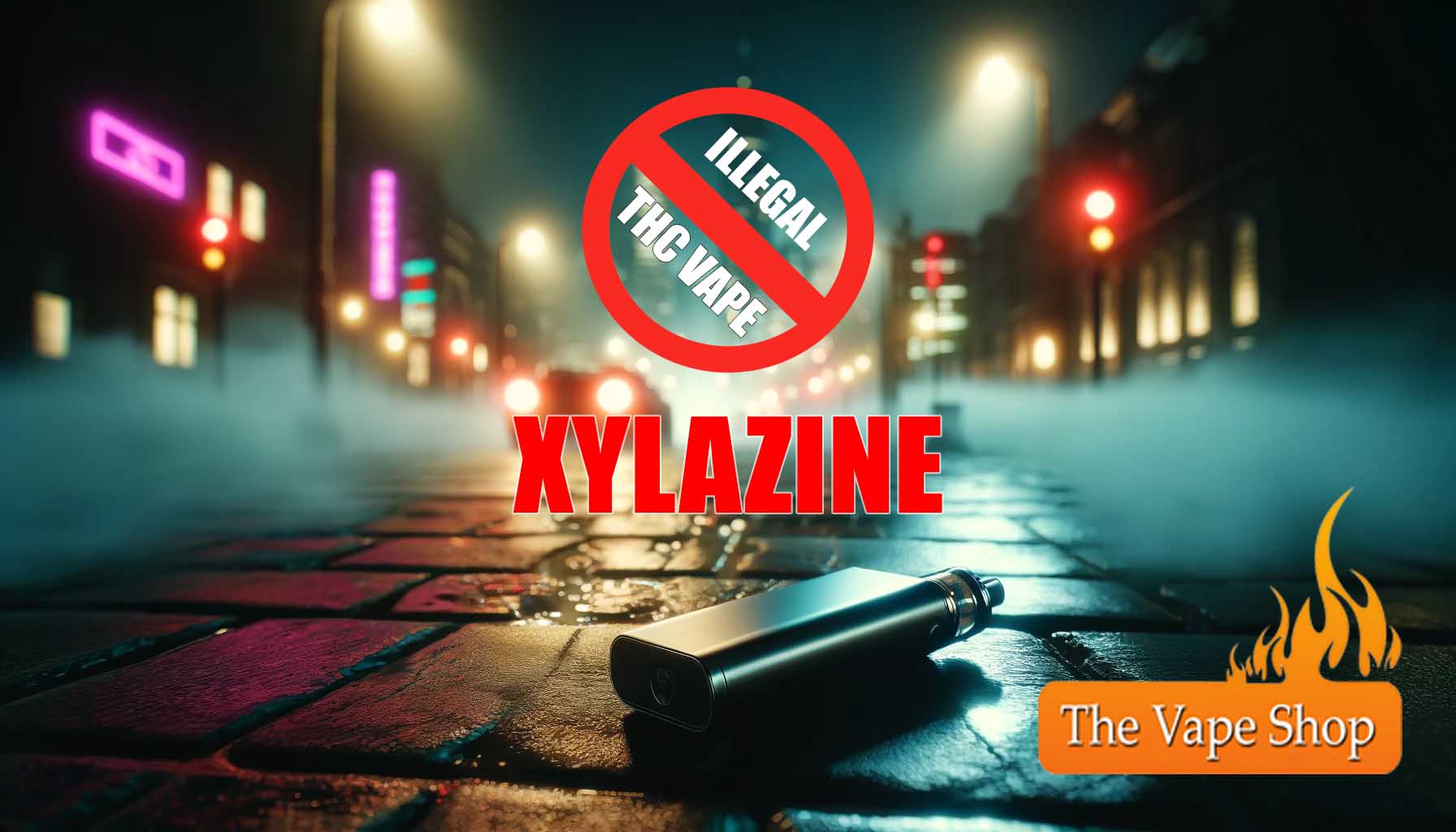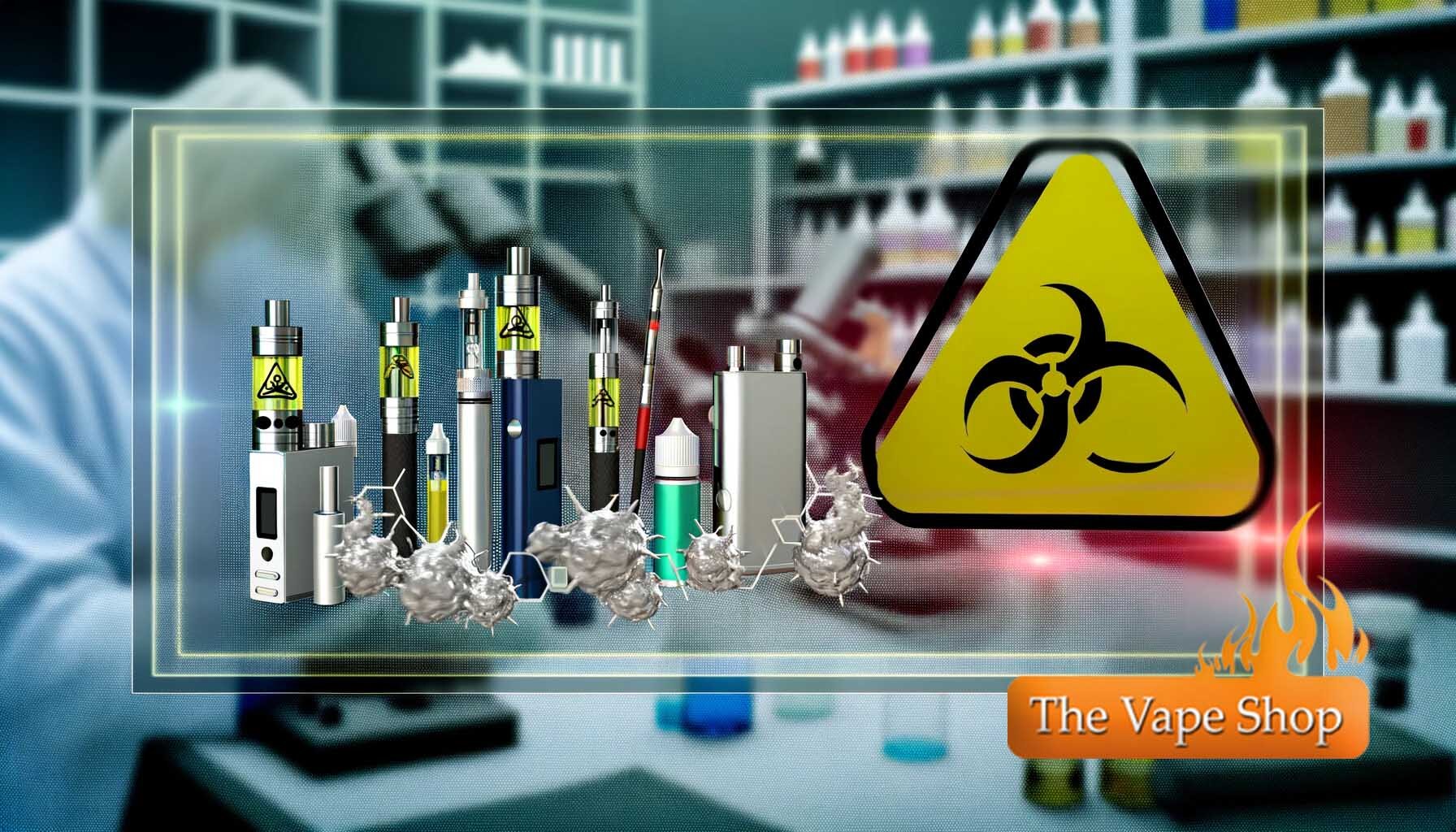Article Quick Links:
Exploration of Youth Smoking and Vaping
Youth Shift from Traditional Smoking to Vaping
Evolving Trends Of Vaping Among Youth
Vaping vs. Smoking
Vaping Regulations
Striking a Balance
Peeling Back the Layers: A Fact-Based Exploration of Youth Smoking and Vaping

In an era where public health policies and societal attitudes towards smoking are rapidly evolving, it becomes imperative to examine the shifting landscape of nicotine use among youth. This article, presented by The Vape Shop, delves into the historical and current trends of smoking and vaping among young people in the UK, juxtaposed with global perspectives. We explore the significant decrease in youth smoking rates over the past few decades and the concurrent rise in vaping, analysing data from credible sources like NHS Digital and ASH. Our focus extends to the impact of public health policies on these trends and the potential ramifications of recent regulatory changes in vaping. In doing so, we aim to provide a comprehensive view of how the dynamics of youth nicotine use are changing, and what this means for future policies and health initiatives. As we navigate this complex terrain, the question arises: are we witnessing a simple shift in preference from traditional cigarettes to vaping, or is there a deeper transformation at play in the habits of young people? Join us as we unpack these trends and their broader implications for public health and youth behaviour.
Tracing the Decline: A Historical Perspective on UK Youth Smoking Trends
Historical Decline in Youth Smoking in the UK: Smoking among young people in the UK has shown a significant decrease over the past few decades. For instance, in 2021, only 3% of pupils were classified as current smokers, a notable fall from 5% in 2018 and a significant decline since 1996 when 22% of pupils were current smokers. This trend is also reflected in the proportion of pupils classified as regular smokers, dropping to 1% in 2021 from 2% in 2018. Furthermore, the number of pupils who had ever smoked also saw a decrease, from 16% in 2018 to 12% in 2021 (NHS Digital, 2021).
Exposure to Smoking and Attitudes Among Youth: In terms of exposure to second-hand smoke, the UK has seen a decline in exposure among young people both at home and in cars. This is likely influenced by public health policies such as the ban on smoking in cars with under 18s present, introduced in 2015. Additionally, attitudes towards smoking among young people have remained relatively stable in recent years, with a significant proportion of pupils believing that it’s not acceptable to try smoking (NHS Digital, 2021).
Influence of Public Health Policies: Various public health policies have contributed to this decline in youth smoking rates. For example, the UK banned the sale of tobacco from vending machines and required cigarettes to be sold in plain packaging. Furthermore, there has been a ban on car smoking when a child under 18 is present. These measures, alongside targeted mass-media campaigns and education, have played a crucial role in reducing smoking rates among young people (ASH).
Comparative Trends with the USA: Just like in the USA, the UK’s decline in youth smoking rates has been dramatic. For instance, smoking rates among children under 16 in England decreased from 19% in 1982 to 5% by 2018. This decline was more pronounced in older adolescents, with smoking rates among 16 and 17-year-olds falling from 23.3% to 7.8% between 2007 and 2019 (ASH).
Evaluating the Global Perspective: UK and USA Smoking Trends Comparison
The historical context in the UK, like in the USA, shows a clear trend of declining smoking rates among youth, influenced by comprehensive tobacco control policies and public health initiatives. This information is critical when considering the potential impact of vaping regulations on youth smoking trends.
Navigating the New Norm: Youth Shift from Traditional Smoking to Vaping in the UK

The statistics regarding young people vaping in the UK, when compared to smoking figures, present an interesting dynamic. According to NHS Digital’s 2021 report, the proportion of pupils classified as current e-cigarette users increased from 6% in 2018 to 9% in 2021. This rise in vaping did not correspond with an increase in lifetime use of e-cigarettes, which remained relatively stable (22% in 2021 compared to 25% in 2018). Notably, the prevalence of e-cigarette use was higher in older age groups, with 18% of 15-year-olds being current users.
Declining Smoking Rates: A Parallel Trend
In contrast, cigarette smoking among young people has seen a decline. In 2021, only 3% of pupils were current smokers, down from 5% in 2018. Furthermore, the proportion of pupils who had ever smoked cigarettes decreased from 16% in 2018 to 12% in 2021, the lowest level ever recorded.
The ASH report from 2023 further illustrates the trends in vaping among young people. It was found that 20.5% of children had tried vaping, an increase from previous years. The growth in experimentation with vaping (trying once or twice) increased significantly, while the change in current vaping (from 6.9% to 7.6%) was not as pronounced.
These figures indicate that while vaping is increasing among young people, it does not necessarily translate to a corresponding increase in cigarette smoking. The statistics suggest a continued decline in smoking rates among youth, despite the rise in vaping. This trend might imply that vaping is not leading to an increase in traditional cigarette smoking among young people, although the relationship between vaping and smoking initiation remains a complex and multifaceted issue.
Assessing the Public Health Implications of Vaping’s Popularity
The government’s approach to vaping and smoking is also evolving. For instance, the UK government has launched initiatives like the ‘swap to stop‘ scheme, encouraging smokers to switch to vapes as a less harmful alternative, while also cracking down on illicit vape sales to prevent underage usage.
These insights are crucial for understanding the impact of vaping on youth smoking trends. While vaping is on the rise among young people, it does not appear to be leading to increased cigarette smoking rates, which continue to decline. However, the growing popularity of vaping among youth still poses a public health concern, necessitating ongoing monitoring and targeted interventions.
Evolving Trends: Understanding the Shift from Smoking to Vaping Among Youth

Comparing the proportion of young people vaping currently to the proportion of young people who smoked cigarettes historically before the introduction of vapes is challenging due to several factors, including different time frames, the evolving nature of public health campaigns, and changes in social attitudes towards smoking. However, we can still look at the data to draw some insights.
- Historical Smoking Rates Among Young People (Pre-Vaping Era): In the UK, before the widespread availability of e-cigarettes, smoking rates among young people were notably higher. For instance, smoking among children under 16 in England has been monitored since 1982 when current smoking was 19%. By 2000, it was still 19%, but by 2018 it had declined to 5%.
- Current Vaping Rates Among Young People: As per the 2021 data from NHS Digital, 9% of 11 to 15-year-old children used e-cigarettes, up from 6% in 2018. According to the ASH report from 2023, 20.5% of children had tried vaping, with 7.6% being current vapers.
Analysing the Data: A Comparative Look at Historical Smoking and Current Vaping Rates
When comparing these figures, it seems that the proportion of young people vaping is not equivalent to the proportion of young people who smoked cigarettes before the introduction of vapes. The peak smoking rates among young people in the pre-vaping era were significantly higher than the current vaping rates. For example, in 2000, the smoking rate was 19% among under 16s, which is higher than the current vaping rate of 9% among 11 to 15-year-olds in 2021.
Vaping vs. Smoking: The Lesser of Two Evils for the Next Generation?

As The Vape Shop, our observation of the trends in youth smoking and vaping suggests a significant shift in preferences. The decline in young smokers and the concurrent rise in young vapers indicate a close correlation, which we believe is largely attributable to the advent and popularity of vaping. Data shows that while smoking rates among young people have continued to decrease — from 5% in 2018 to 3% in 2021 among pupils in England — the proportion of young e-cigarette users has risen from 6% to 9% in the same period.
We interpret these trends as an indication that vaping is not so much introducing a new group of young people to nicotine use but rather diverting those who might have otherwise taken up smoking. This suggests that the increase in vaping among young people may be largely among those who would have likely experimented with or regularly used traditional cigarettes if vaping were not available. It’s important to recognise that while vaping is generally considered less harmful than smoking, it is not without its risks, especially for young people. However, in the context of harm reduction, these trends could be viewed as a positive shift away from the more harmful practice of smoking towards vaping, which many see as a less damaging alternative.
This perspective is crucial in our dialogue with health policymakers, parents, and the public, as it highlights the potential role of vaping in reducing the harm associated with tobacco use among young people. Our stance is that, with proper regulation and education, vaping could be a key component in continuing to drive down smoking rates, particularly in youth demographics.
Vaping Regulations: Navigating the Thin Line Between Public Health and Unintended Consequences

The potential risks of restrictive vaping policies, particularly those that might inadvertently lead young individuals towards smoking cigarettes, demand a nuanced approach from policymakers. Historical trends indicate a significant decline in youth smoking, coinciding with the rise of vaping. This raises important considerations for how regulations around vaping could impact youth behaviour.
Understanding the Risk of Unintended Consequences: Strict regulations on vaping, such as complete bans or severe restrictions on flavours and accessibility, might have unintended consequences. For instance, these measures could create a vacuum that might be filled by traditional cigarettes, viewed as more accessible or appealing alternatives. This shift could undermine the progress made in reducing cigarette smoking among youth.
Lessons from Alcohol Prohibition in the USA: The alcohol prohibition era in the United States (1920-1933) offers a historical parallel. The ban on alcohol sales led to the rise of an illegal market, fostering an environment where unregulated and often dangerous alcoholic beverages were distributed. This period was marked by a surge in organised crime and a significant public health crisis due to the consumption of unsafe alcoholic products. The prohibition era exemplifies how well-intentioned policies can inadvertently create a thriving underground market, potentially exposing consumers, including young people, to greater risks.
Current Vaping Landscape and Potential for Illegal Market: If vaping products become heavily restricted or banned, there’s a risk of a similar pattern emerging. An underground market for vaping products could develop, lacking quality control and regulation. This could expose young users to more hazardous products, both in terms of unregulated vaping devices and liquids, and possibly a resurgence in smoking.
Balancing Regulation with Harm Reduction: Regulations must balance public health objectives with harm reduction principles. Policies should aim to prevent vaping among non-smoking youths while not pushing current youth smokers or vapers towards more harmful tobacco products. This approach involves targeted education, age restrictions, and controlled access to safer vaping products, rather than outright bans.
Engaging Stakeholders in Policy Development: Policymakers should engage with various stakeholders, including public health experts, educators, parents, and even representatives from the vaping industry, to develop comprehensive strategies. These strategies should aim to minimise the appeal of vaping to non-smokers, prevent access to underage users, and provide safer alternatives for those who might otherwise turn to cigarettes.
Navigating the Path Forward: Striking a Balance Between Vaping Regulation and Youth Health
While the intention behind stringent vaping regulations is to protect young people, it’s vital to consider the broader context and potential unintended consequences. Learning from historical precedents like alcohol prohibition, there’s a need for balanced, evidence-based policies that prevent the onset of more harmful habits like smoking while managing the risks associated with vaping.
Striking a Balance: Advocating for Responsible Vaping Policies

The observed decline in cigarette smoking among youth, juxtaposed with the rise in vaping, necessitates a carefully balanced approach to policy-making. It’s essential that we, as The Vape Shop, continue to engage actively in these discussions, ensuring that our advocacy is informed and nuanced. The role of vaping as a potential factor in reducing youth smoking rates, alongside the implications of recent legislative measures on vaping, calls for ongoing research and a thorough evaluation of the outcomes. Our focus should remain steadfast on advocating for strategies that safeguard the health of young people, while vigilantly avoiding unintended adverse consequences. Crafting policies that effectively address these complex challenges requires regulatory action, comprehensive public health education, and community engagement to ensure the well-being of future generations.














